Power Query: Revision Time – Part 9
5 June 2024
Welcome to our Power Query blog. Today, I continue to create a refreshable revision timetable by randomising the subject slots I need for the timetable.
As my salespeople take a well-earned break, many students here in the UK are preparing for exams in the summer. To help my own offspring get organised, I volunteered to create a refreshable printable revision timetable. This is the result:

I needed a list of topics, and to begin with, I created extra entries for topics that required more timeslots:

We agreed on half-hourly slots, and I created a grid so that my daughter could indicate the slots that she wouldn’t be able to revise.
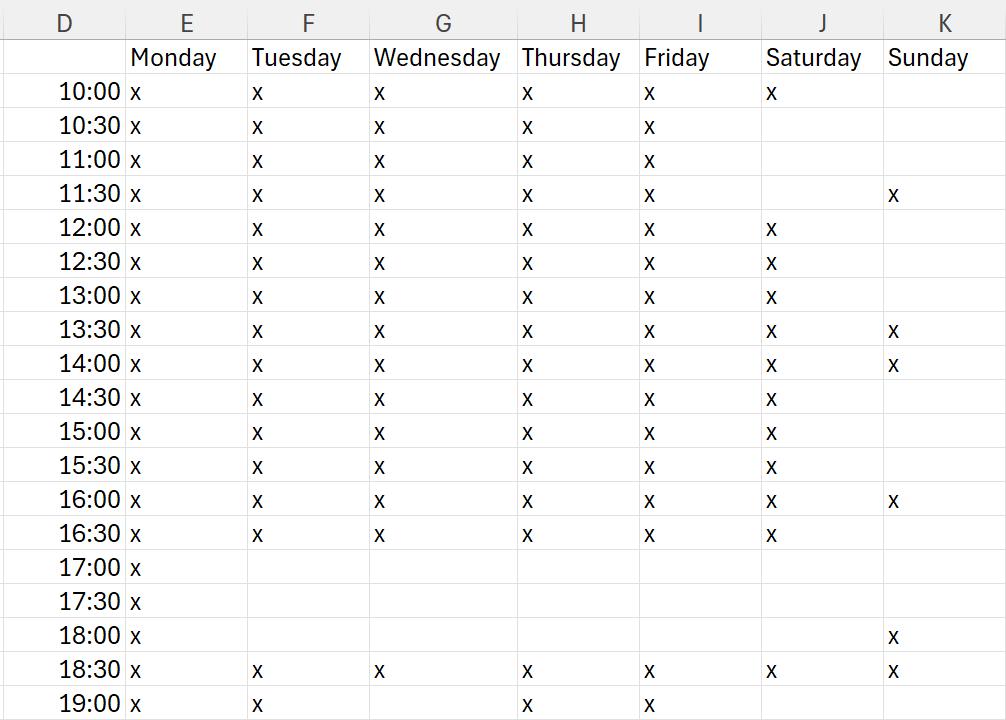
When I first designed the solution, I included some Excel functions, but since this is a Power Query blog, I will ensure that I only use Power Query functions (apart from some formatting at the end!).
In Part 1, I converted my data into two [2] Tables: Subjects and Availability. I extracted Subjects to Power Query.

I created the Availability query by taking a copy of Subjects, and amending it:
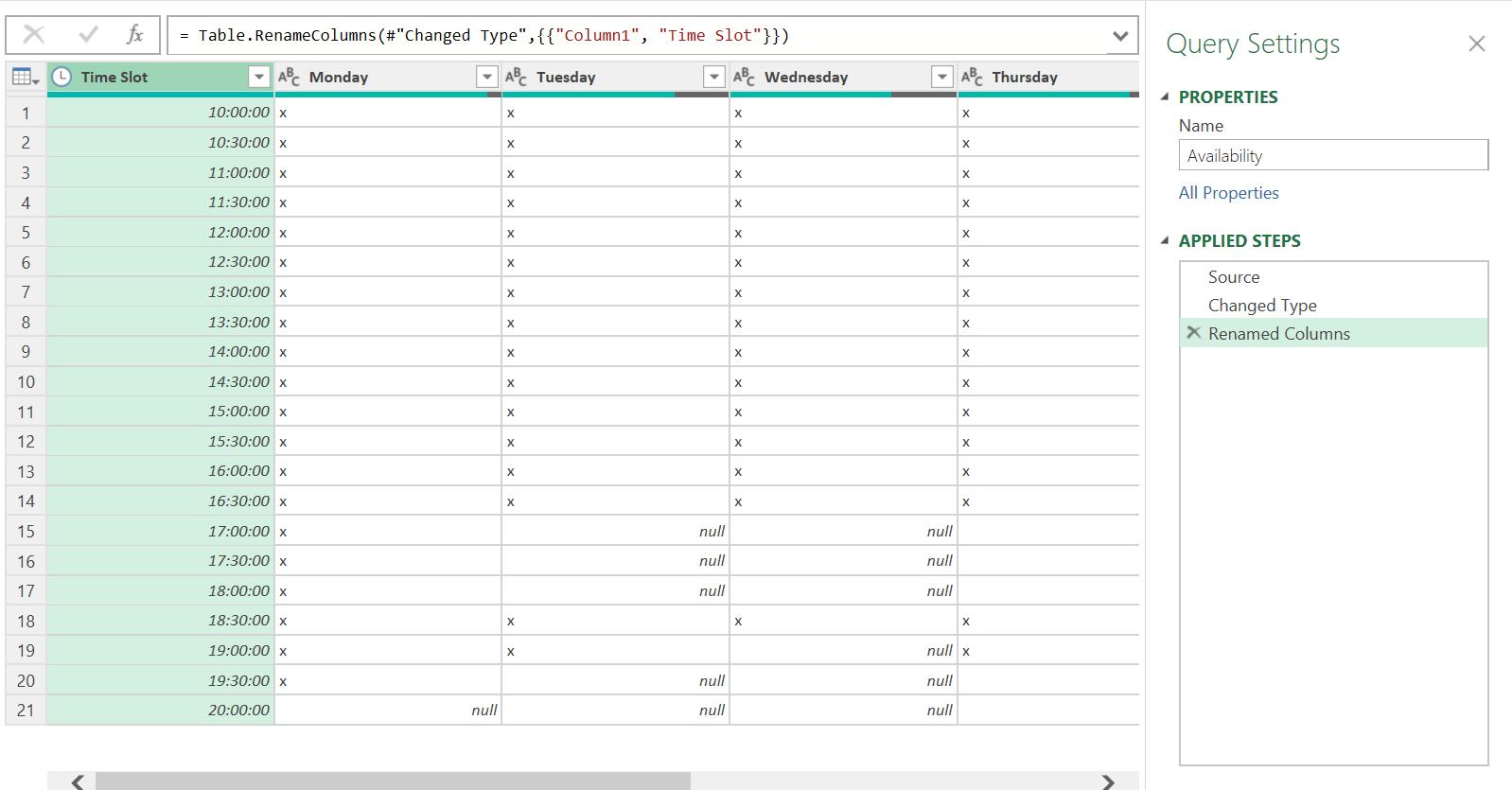
In Part 2, and Part 3, I calculated the number of subjects and the number of slots on Availability.
This gave me both totals:
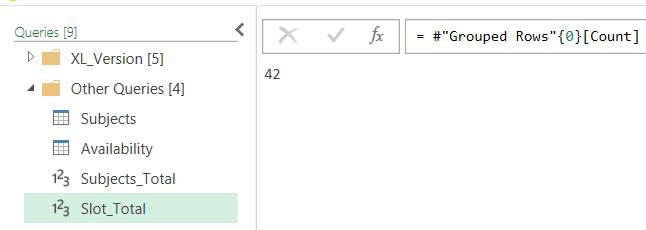
In Part 4, I calculated how many times each subject will appear in a new query, remembering to round up to whole slots.
This told me the number of slots that each subject should have for my example is three [3]:

In Part 5, I created a table where each subject appeared three times (i.e. the number of times given by Subject_Slots).
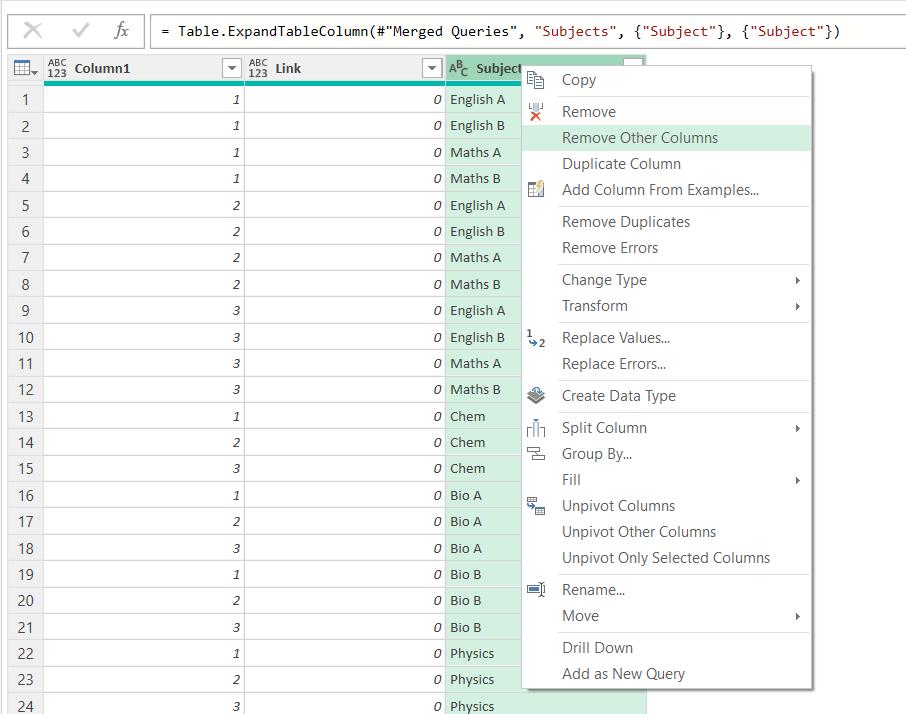
In Part 6, I randomised the order of the slots ready to add to the timetable:

In Part 7, I took a reference copy of the query Availability which I called TimeTable and began to transform it so that it is ready to receive the slot data.

Last time, I appended the slot number data to the rest of the TimeTable query.

This means I have duplicate rows for my slot data, one with data in Slot Number, and one without. I can’t get rid of the rows without data in Slot Number as I need to retain the rows with ‘x’ in the Value column. However, I start with a simple filter to get the basic M code:
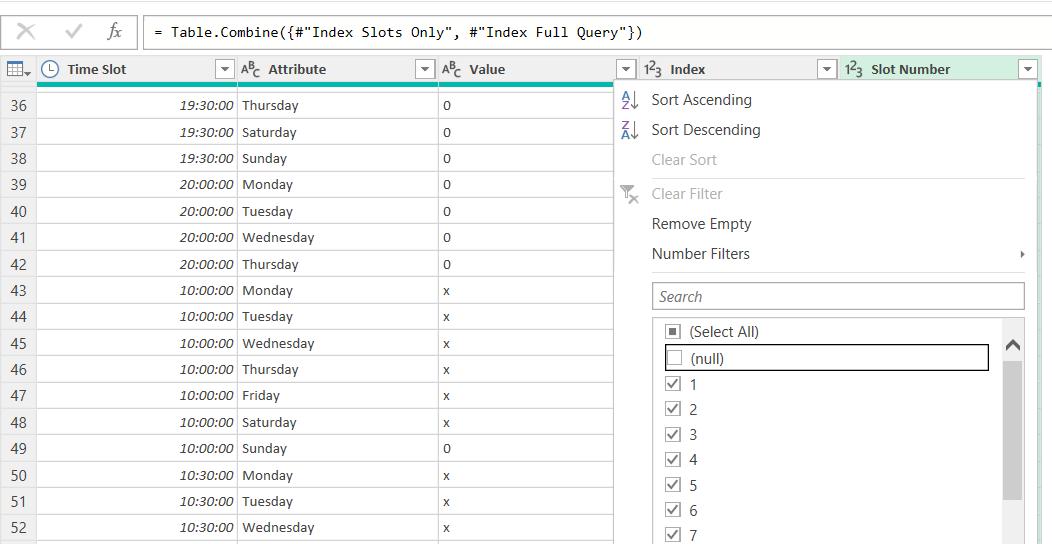
The step generated is:

The M code is:
= Table.SelectRows(#"Appended Query", each ([Slot Number] <> null))
I need to add some logic to this:
= Table.SelectRows(#"Appended Query", each ([Slot Number] <> null or [Value] = "x"))
This retains all the rows I need:

I may now sort the data into ascending Index order:

This data is now ready to merge with the Random_Subject query. Next time, I will look at how I would have approached preparing TimeTable by merging instead of appending.
Come back next time for more ways to use Power Query!

